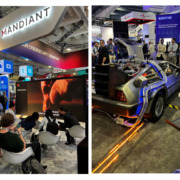Sensory Bins for the Win
As a mother, I have been exposed to the concept of sensory play, particularly in the form of sensory bins. Sensory play during my childhood took the form of simple crafts or playing outdoors, while the modern spin is sensory bins. These are essentially containers holding a filler (such as sand, rocks, dry pasta or rice) and various “trinkets” for which the opportunities are endless. Sensory bins can be themed with carefully selected items or random, consisting of whatever may be in arms reach. Play engages multiple senses simultaneously and leverages fine motor skills such as digging, scooping and pouring between the various objects.
Since the onset of the pandemic, creative approaches to activity and emotion management, such as sensory bins, have become increasingly popular. Many pull them out when needed and put a lid on them until the next sensory opportunity is needed. Admittedly, I have not prepared sensory bins for my toddlers quite yet, but I am intrigued by their functionality and personal development opportunities that may service us, as adults, as well. While we may “grow out” of sensory bins, there is no age limit to sensory engagement! There are simple adult alternatives, such as Zen gardens, stress balls, and fidget spinners, but also other ways we can include sensory engagement in our daily lives.
There are many known benefits to filling your “sensory diet”:
- Self-regulation of emotions
- Reduction in stress and anxiety
- Opportunities to explore and discover
- Stimulation by multiple senses simultaneously
- Socialization skills, cognitive and language development
As a new employee at Ideba, I have found each project engagement a sensory bin experience in and of itself. Sensory bins have been termed the “play equalizer”. Here at Ideba, working with a team of diverse backgrounds and skill sets has already facilitated collaborations and fostered growth opportunities for me. As we hover around the next client “sensory bin”, communication and cooperation are imperative to digging up the gold nuggets in the customer feedback, strategies, operational strengths and weaknesses. With an open-minded and opportunistic approach, we can all benefit from creative forms of sensory engagement (even without creating a messy bin with a lid on it).
Do you use sensory activities to manage stress or have sensory opportunities in the workplace? What are your “adult versions” of sensory bin activities? Share them with me on our LinkedIn post or send me a note at leahm@idebamarketing.com.
-Leah McQuillan, Research Manager









